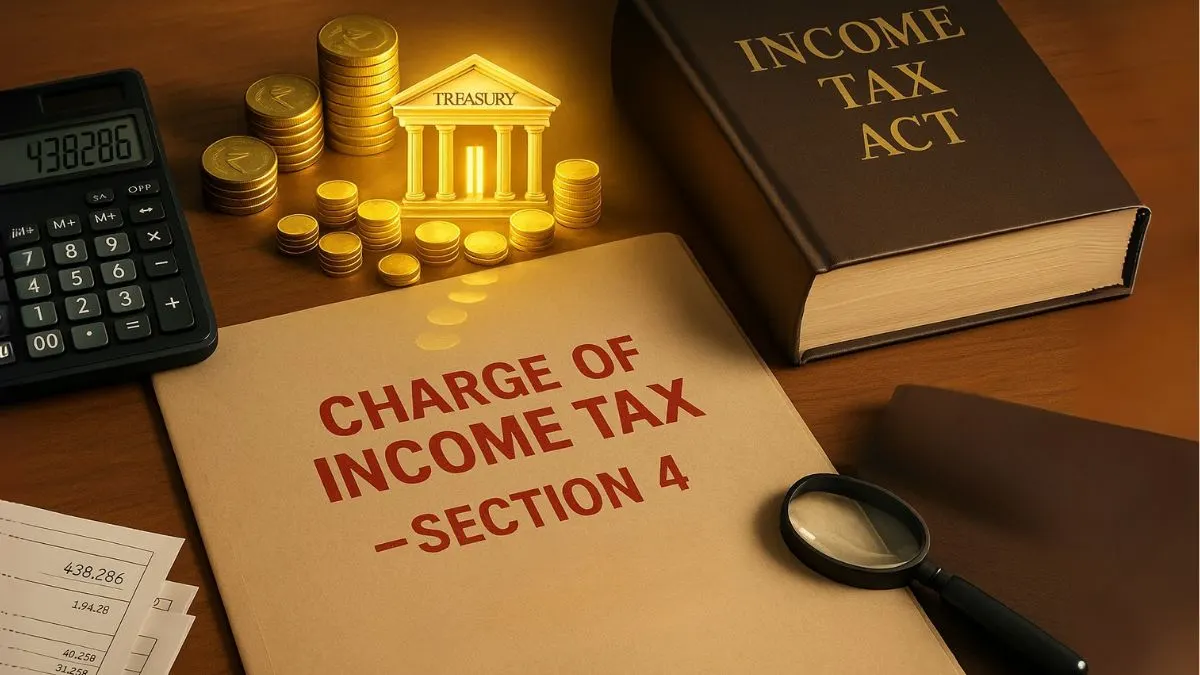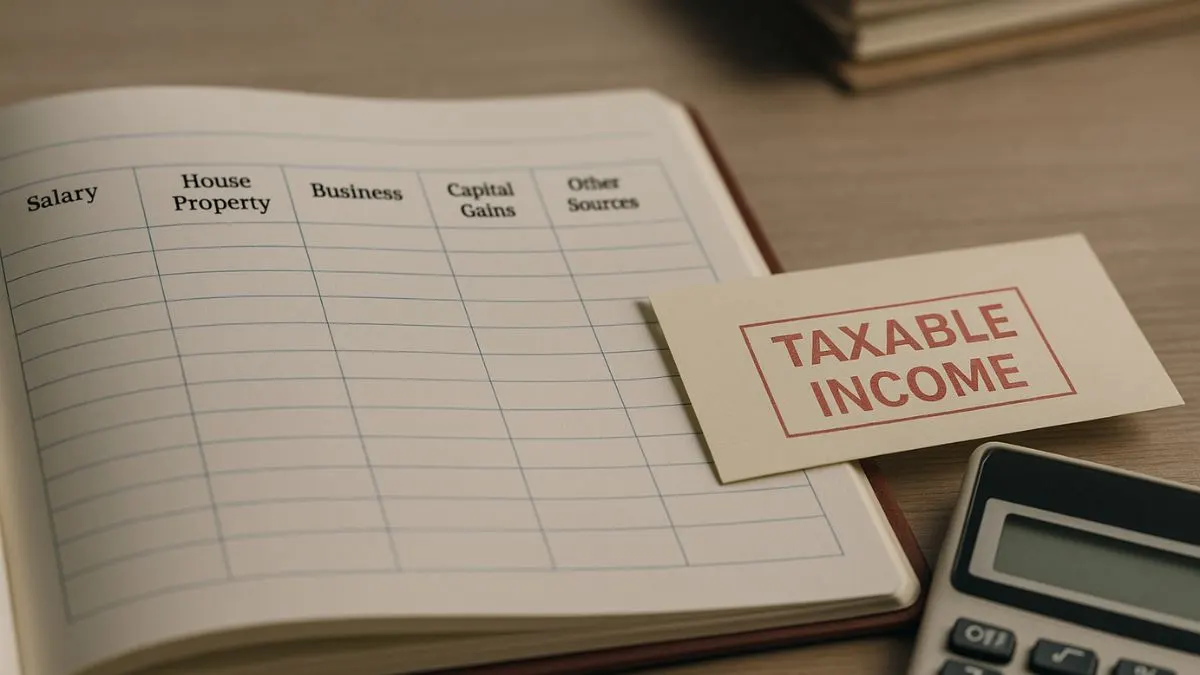
The Income Tax Act, 1961, governs the levy, administration, and collection of income tax in India. At the very core of this legislation lies Section 4, the charging section. Simply put, it gives the government the legal authority to levy income tax. Without this provision, the entire taxation system would be without foundation.
Section 4 of the Income Tax Act provides for the charge of income tax on the total income of a taxpayer. Whether you are a salaried employee, a freelancer, a business owner, or even a multinational corporation operating in India, your liability begins here. It establishes the fundamental basis for income tax charging and sets the tone for the way income is assessed, computed, and taxed.
What Does Section 4 State?
Section 4 is straightforward yet powerful. It lays down:
- Income tax shall be charged for every assessment year.
- The charge applies on the total income of the previous year.
- The applicable tax rates are defined in the annual Finance Act.
- The liability applies universally, depending on residential status & scope of income.
Thus, the section does not simply create an obligation; it establishes the mechanism of charge of income-tax on taxpayers in India.
The Concept of "Charge of Income-Tax"
The phrase “charge of income-tax” has enormous significance. It means the government is legally empowered to levy tax, and taxpayers are legally bound to pay it.
Key points include:
- Legal Obligation – Once total income is determined, tax becomes payable as per Section 4.
- Annual Charge – Tax liability is assessed every year, not once in a lifetime.
- Universality – It applies to individuals, HUFs, companies, firms, and all entities defined as “persons” under the Act.
This single provision creates the taxpayer-government relationship & ensures compliance with India’s revenue system.
Also Read: Tax-Free Allowances Explained for Employees
How Section 4 Connects with Total Income
Section 4 doesn’t just charge tax vaguely—it specifically states that the tax is levied on total income.
- Total income is computed as per the Act, across the five heads of income:
- Salary
- House Property
- Business or Profession
- Capital Gains
- Other Sources
- Deductions, exemptions, and rebates are considered before arriving at the final figure.
This ensures that the charge of income tax is fair & comprehensive, accounting for all sources of revenue.
Role of Finance Act with Section 4
While Section 4 sets the framework, the Finance Act each year prescribes the tax rates."
- Section 4 = Legal authority to levy tax.
- Finance Act = Actual percentage of tax applicable.
This dual arrangement ensures stability in law (Income Tax Act remains unchanged) while allowing flexibility for yearly rate changes.
Practical Example
Let’s break this down with an example:
- Mr. A earns ₹12,00,000 in a financial year through salary & investments.
- As per Section 4, tax is charged on his total income for the relevant assessment year.
- Deductions under Chapter VI-A (say ₹1,50,000 under 80C) reduce taxable income to ₹10,50,000.
- The Finance Act for that year prescribes the exact slab rates.
This shows how Section 4 provides for the charge of income tax on the total income of a taxpayer, while other provisions & the Finance Act handle computation and rates.
Also Read: The ₹1.5 Lakh Tax-Saving Secret Most Taxpayers Miss!
Judicial Perspective
Indian courts have often emphasized that Section 4 is the charging section:
- CIT vs. B.C. Srinivasa Setty – The Supreme Court clarified that without a charging section, no tax can be imposed.
- Courts have held that the section must be strictly interpreted; ambiguity always benefits the taxpayer.
- However, exemptions or deductions are not presumed; they must be explicitly mentioned elsewhere in the Act.
This judicial clarity reinforces Section 4’s position as the foundation of taxation.
Importance of Section 4 in Tax Framework
- Foundation of Tax Liability – Without it, the government has no authority to tax.
- Universal Application – Applies to every taxpayer, individual or corporate.
- Fairness – It bases liability on total income, ensuring equitable treatment."
- Revenue Protection – Prevents tax avoidance by creating a wide scope of taxation.
Common Misconceptions
Some taxpayers assume that Section 4 provides exemptions or rebates. This is incorrect.
- Section 4 only creates the charge.
- Exemptions are covered in Section 10.
- Deductions are covered in Chapter VI-A.
So, think of Section 4 as the entry gate of taxation. Once inside, other sections guide you on reductions & relief.
FAQs on Section 4 of Income Tax Act
Q1. What is Section 4 of Income Tax Act?
It is the charging section that provides for levy of income tax on the total income of every taxpayer.
Q2. Who is covered under Section 4?
All persons defined under the Act, including individuals, HUFs, firms, companies, AOPs, and BOIs.
Also Read: Income Tax Intimation Under Section 143(1)
Q3. Does Section 4 mention tax rates?
No. The Finance Act each year specifies tax slabs and rates.
Q4. Why is Section 4 important?
It is the legal foundation for taxation in India & ensures the government has the right to collect tax.
Conclusion
Section 4 of the Income Tax Act establishes the charge of income tax on the total income of a taxpayer. It is the starting point of taxation, making it the most fundamental provision of the Act. While the Finance Act prescribes rates, Section 4 provides the legal authority to levy taxes.
For taxpayers, understanding this section is vital as it marks the beginning of their tax journey. Whether you earn through salary, business, property, or investments, your liability exists because of Section 4.
💡 Want to know how Section 4 affects your income tax liability? Our experts at Callmyca.com explain it in simple terms and help you save tax legally. Book a free consultation today!











